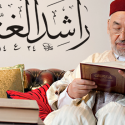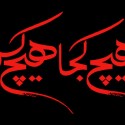Since the late 1990s, a number of Islamic movement specialists have begun to bridge the gap between the study of Islamic activism and social science theories of collective action. The underlying premise is that Islamic activism is not sui generis.

Since the late 1990s, a number of Islamic movement specialists have begun to bridge the gap between the study of Islamic activism and social science theories of collective action. The underlying premise is that Islamic activism is not sui generis. Rather than emphasizing the specificity of Islam as a system of meaning, identity, and basis of collective action1, these scholars point to movement commonalities rooted in process: how contention is organized, the way ideas are framed and propagated, how grievances are collectivized, and tactics and strategies in response to exogenous shifts in opportunities and constraints. By focusing on shared mechanisms of contention rather than the uniqueness of Islam, such an understanding avails itself of a broader array of concepts, theories, and comparative empirics. In this new approach, scholars primarily emphasize three sets of processes—resource mobilization, decision making, and framing—each of which is operative in both Islamic and non-Islamic activism.
Resource mobilization
Many studies of Islamic activism emphasize the underlying grievances that engender impetus for collective action, including blocked social mobility, a lack of political freedom, economic despair, a sense of cultural vulnerability, and humiliation. The central argument is that, as Ted Gurr once famously put it, “misery breeds revolt.”
The problem with such arguments is that while misery is ubiquitous, mobilization is not. Social movement theorists have attacked grievance- based explanations as incomplete: grievances are not irrelevant, but there is a missing intermediary set of variables that is necessary to translate grievances into actualized mobilization. In particular, movements need resources and mobilizing structures to collectivize what would otherwise remain individualized grievances. Money, communications technology, meeting places, social networks, and other resources are needed to organize, direct, and mobilize contention. Without organizational capacity, individuals remain isolated from one another and unable effectively to launch collective endeavors. Differences in mobilization patterns are, in part, explained by the degree of resource availability, and the types of resources and mobilizing structures utilized by particular groups. For Islamic activism, important resources and mobilizing structures include mosques, study circles, dense social networks (friends and family), Islamic non-governmental organizations, political parties, the dars (religious lesson), the khutba (sermon), professional and student associations, and unions. All of these are utilized to effectively recruit, organize, and launch contention. To a large extent, the reason Islamic movements have emerged as a dominant opposition in the Muslim world is because they command more societal institutions and resources than other movements. In addition, the ability of activists to tap religious resources provides a modicum of protection from regime repression. Certainly, regimes in the Muslim world have severely hamstrung mobilization, but a full-blown crackdown on religious institutions and resources is a delicate and difficult endeavor, since it can engender societal backlashes.
Examples of resource mobilization abound. In the early 1990s, the Islamic Salvation Front (FIS) utilized the national network of mosques and community organizations in Algeria to organize for elections. The electoral success of the FIS in the face of regime repression and electoral manipulation was, at least in part, due to the party’s access to enduring religious institutions. The Islamic Group (al-Jama‘a al-Islamiyya) in Egypt enjoyed similar resources and institutional access during the 1980s. In the city of Dairut (Upper Egypt) alone, the movement controlled about 150 mosques. Access to the mosques was used to provide social welfare services, create community “reconciliation committees,” hold meetings, and recruit support. The regime’s difficulty in uprooting the Islamic Group in the 1990s reflected the organizational resilience of the movement. When the regime tried to repress the movement, it met dramatic resistance since “after a decade of organizing social and political networks in Upper Egypt, the Islamists had the capacity to fight back.”2 Moderate Islamic groups in Egypt, Jordan, and Yemen have successfully utilized grassroots networks of non-governmental organizations to provide basic goods and services to communities, develop contact points with the public, recruit support, and organize.
Resource mobilization is a process that transcends the specificity of ideology. Though ideology can limit the range of resource options by excluding some as contrary to movement beliefs, movement fortunes frequently ebb and flow according to resource availability and institutional access. A focus on resource mobilization emphasizes how movements mobilize, rather than the ultimate goal of mobilization.
Decision making
Some earlier research on Islamic activism assumed the pre-eminence of belief in dictating behaviour. Although this assumption was never a universal norm, Orientalist influence often privileged the causal import of ideas and Islam as a belief system.
Largely, the new emphasis on process challenges some earlier ontological assertions about the Islamic activist. Rather than viewing activists as dogmatically guided by rigid adherence to ideology, a number of recent studies adopt a loose rational actor model. From this perspective, Islamic activists are driven by tactical and strategic assessments of costs and risks. Choices reflect conscious evaluations of whether decisions help achieve goals within a context of opportunities and constraints. Although such an approach tends to avoid the conceptual language of rational choice theory (preferences, utility maximization, etc.), it shares the emphasis on strategic decision-making.
This trend is most apparent in studies of violent groups in particular. Perhaps as a reaction against caricatures of the “irrational zealot,” social scientists have highlighted the strategic logic of radicals. Hamas, for example, strategically responds to changes in the political context.3 Prior to the al-Aqsa intifada in 2000, growing popularity for the Palestinian-Israeli peace process challenged the viability of Hamas. Strict intransigence toward peace was likely to erode support from a population that sought an end to the economic and social hardships of occupation, thereby threatening the organizational survival of the movement. In response, Hamas tactically adjusted its doctrine to accommodate the possibility of peace by framing it as a temporary pause in the jihad. After the al-Aqsa intifada in 2000, however, popular support for Hamas grew and the movement returned to its earlier pro-violence frames. Mohammed M. Hafez uses an implicit rational actor model to explain Muslim rebellions in Algeria and Egypt during the 1990s. He contends that violence erupted as a response to “an ill-fated combination of institutional exclusion, on the one hand, and on the other, reactive and indiscriminate repression that threaten[ed] the organizational resources and personal lives of Islamists.”4 To defend themselves against regime repression the Islamists went underground and formed exclusive organizations, leading to a process of encapsulation and radicalization.
Stathis N. Kavylas views the Islamist-led massacres that plagued Algeria in the 1990s as strategic assaults intended to deter civilian defections “in the context of a particular strategic conjuncture characterized by (a) fragmented and unstable rule over the civilian population, (b) mass civilian defections toward incumbents and (c) escalation of violence.”5 Several scholars have argued that the tactic of suicide bombing is rational in that it helps Islamic (and other) terrorist groups achieve their group goals.6 In addition, Michael Doran conceptualizes al-Qaeda as a rational actor, arguing that, “When it comes to matters related to politics and war, al-Qaeda manoeuvres around its dogmas with alacrity.” In this understanding, “Al-Qaeda’s long-term goals are set by its fervent devotion to a radical religious ideology, but in its short-term behaviour, it is a rational political actor operating according to the dictates of realpolitik.”7
This is not to completely marginalize the role of Islamist ideology in decision-making. The universe of potential choices is circumscribed by the “imaginable options” within particular worldviews. However, the rationality of Islamist decision-making demonstrates that the process of choice is shared by a wide range of movement types.
Framing
Although the new approach to Islamic activism de-emphasizes ideology and belief as causal variables, it does not reject the role of ideas altogether. Instead, the primary concern is how ideas are socially created, arranged, and disseminated. In other words, the emphasis is on the process of constructing discourse and the resulting ideational packages. In the parlance of social movement theory, movements must “frame” their arguments to persuade audiences and elicit support and participation.
Al-Qaeda, for example, is embroiled in a bitter “frame dispute” with the Saudi ulama (religious scholars) in which each asserts a particular interpretation and the right to sacred authority. Al-Qaeda emphasizes the knowledge, character, and logic of its scholars while attacking its detractors based upon the same criteria. Its supporters are framed as honourable, independent, and scientific in their approach to interpreting Islam. Opponents, in contrast, are framed as corrupt “sheikhs of authority” or “palace lackeys” inextricably linked to corrupt Muslim governments. The framing strategy is designed to insert al-Qaeda as the sole mediator between the sacred texts and religious practice.
To maximize access to these discontented populations, Islamists have in many cases generated frames that meld religious and non-religious themes to garner broad support among those who are merely seeking a change from the status quo rather than an Islamic transformation. Meriem Vergès, for example, shows how the Islamic Salvation Front (FIS) in Algeria strategically framed itself as the heir to the revolutionary mantel of the war of independence.8 Using the langu age and symbols of the revolution, the FIS attempted to portray itself as a natural extension of the struggle while denouncing the regime as a usurper of Algeria’s historic memory. Such examples demonstrate the strategic dimensions of framing: content is frequently selected according to its potential persuasive effects rather than solely on the basis of ideology.
An approach to the study of Islamic activism that draws from social science theory erodes essentialist assumptions about Islamic exceptionalism. It offers analytic tools for addressing key questions and draws from comparative research, thus adding broader empirics. Moreover, by emphasizing the dynamics of activism rather than the uniqueness of Islam as an organizing belief system, such an approach opens possibilities for dialogue with students of non-Islamic contention, potentially offering new insights.
Source : ISIM NEWSLETTER 14 / JUNE 2004
An earlier version of this article has been published in the IIAS Newsletter 33 (2004), see also http://www.iias.nl.
Notes
1. Quintan Wiktorowicz, ed., Islamic Activism: A Social Movement Theory Approach (Bloomington: Indiana University Press, 2004).
2. Mohammed M. Hafez and Quintan Wiktorowicz, “Violence as Contention in the
Egyptian Islamic Movement,” in Islamic Activism: A Social Movement Theory
Approach, ed. Quintan Wiktorowicz (Bloomington: Indiana University Press, 2004):
61–88.
3. Shaul Mishal and Avraham Sela, The Palestinian Hamas: Vision, Violence, and Coexistence (New York: Columbia University Press, 2000).
4. Mohammed M. Hafez, Why Muslims Rebel: Repression and Resistance in the Islamic World (Boulder: Lynne Rienner Publishers, 2003): 21-22.
5. Stathis N. Kalyvas, “Wanton and Senseless? The Logic of Massacres in Algeria,” Rationality and Society 11, no. 3 (1999): 243-285.
6. Robert Pape, “The Strategic Logic of Suicide Terrorism,” American Political Science Review 97, no.2 (2003): 343-362.
7. Michael Doran, “The Pragmatic Fanaticism of al Qaeda: An Anatomy of Extremism in Middle Eastern Politics,” Political Science Quarterly 117, no. 2 (2002): 177-190.
8. Meriem Vergès, “Genesis of a Mobilization: The Young Activists of Algeria’s Islamic Salvation Front,” in Political Islam, eds., Joel Beinin and Joe Stork (Berkeley: University of California Press, 1997): 292-305.
Quintan Wiktorowicz is Assistant Professor of International Studies and J.S. Seidman
Research Fellow at Rhodes College in Memphis, Tennessee. His current research focuses on the emergence of radical Islamic groups in Europe.
E-mail: wiktorowiczq@rhodes.edu




iThere are no comments
Add yours